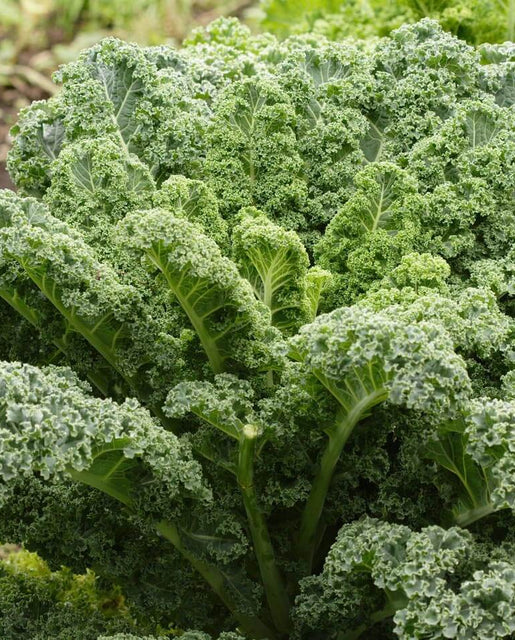
Dharaseeds
Winterbor
Estimated Free Delivery between April 16 and April 19.
Secured Payment Methods
Your transaction is protected with advanced security measures to keep your information confidential
Winterbor is a popular variety of curly-leaf kale known for its cold-hardiness and ability to thrive in winter conditions. It’s a great choice for gardeners looking to grow kale in cool climates or for winter harvests. This variety produces dark green, crinkled leaves that are both nutritious and flavorful. Ideal for those who want to enjoy fresh kale during the cooler months.
Key Benefits
- Cold-Hardy: Winterbor is specifically bred to withstand cold temperatures and can be grown well into the winter months, even after light frosts. The frost makes the leaves sweeter, providing a unique flavor.
- Rich in Nutrients: Kale is known for being a superfood. Winterbor offers high levels of vitamins A, C, and K, as well as important minerals like iron, calcium, and magnesium.
- Versatile Culinary Use: The tightly curled leaves of Winterbor make it ideal for cooking, sautéing, salads, soups, and smoothies. It’s a fantastic addition to both raw and cooked dishes, adding a delightful texture and earthy taste.
- Resistant to Pests and Diseases: Winterbor has a reputation for being less susceptible to aphids and cabbage worms compared to other kale varieties.
- Fast-Growing: Despite its cold tolerance, Winterbor is a relatively fast-growing variety, making it suitable for early spring, fall, and winter harvests.
Planting Instructions
Planting Season
- Winterbor is best planted in early spring or late summer to early fall for winter harvests. It is ideal for cool-season gardening, as it can tolerate frost and even become sweeter after exposure to cold temperatures.
Planting Details
- Seed Depth: Plant Winterbor seeds about 1/4 to 1/2 inch deep in well-draining, fertile soil.
- Spacing: Space the seeds approximately 12-18 inches apart in rows 18-24 inches apart. This spacing allows for ample air circulation and reduces the risk of disease.
- Sunlight: Winterbor kale grows best in full sun but can tolerate light shade, especially in warmer climates.
Care Instructions
Watering
- Keep the soil consistently moist but not waterlogged. Kale prefers even moisture levels, especially in the early stages of growth. Water deeply to encourage root development.
Fertilizing
- Amend the soil with organic compost before planting, and fertilize regularly with a balanced fertilizer during the growing season to encourage strong leaf production.
Mulching
- Mulching helps retain moisture, suppress weeds, and insulate the soil from extreme temperature fluctuations, especially important in cold climates where Winterbor is typically grown.
Pest and Disease Control
- While Winterbor is more pest-resistant than other kale varieties, it’s still important to monitor for common pests such as aphids, cabbage worms, and slugs.
- Use organic pest control methods like neem oil, insecticidal soap, or diatomaceous earth.
- Keep an eye on fungal issues like downy mildew by providing adequate air circulation around your plants and avoiding overhead watering.
Harvesting
- Baby Greens: Harvest young leaves for baby kale after about 30-40 days for tender, mild-tasting leaves.
- Mature Leaves: For fully mature leaves, you can start harvesting around 60-75 days, depending on growing conditions. Pick the outer leaves first, leaving the center to continue growing.
Additional Notes
- Taste: Winterbor has a mild, earthy flavor that becomes sweeter after exposure to cold. It’s perfect for raw salads or cooked dishes like soups, stews, and sautéed greens.
- Storage: Kale can be stored in the refrigerator for up to 7 days. It can also be blanched and frozen for long-term storage.
- Companion Planting: Winterbor kale does well when planted alongside peas, radishes, onions, and garlic, but avoid planting it near other cabbage family members to reduce competition for nutrients.
Conclusion
The Winterbor Kale variety is perfect for gardeners looking to grow a nutritious, cold-tolerant green with easy-growing qualities. Whether you’re a beginner or an experienced gardener, Winterbor is a great choice for winter harvesting, offering sweet, flavorful leaves perfect for a variety of culinary applications. Enjoy fresh, homegrown kale even in the chill of winter!









